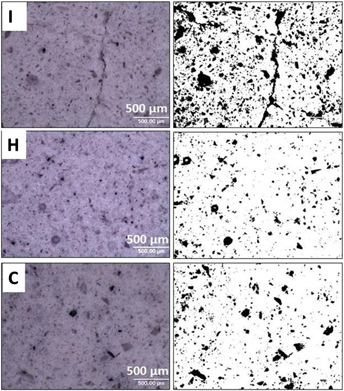Crossref Citations
This article has been cited by the following publications. This list is generated based on data provided by
Crossref.
Dezerald, Lucile
Kohanoff, Jorge J.
Correa, Alfredo A.
Caro, Alfredo
Pellenq, Roland J.-M.
Ulm, Franz J.
and
Saúl, Andrés
2015.
Cement As a Waste Form for Nuclear Fission Products: The Case of90Sr and Its Daughters.
Environmental Science & Technology,
Vol. 49,
Issue. 22,
p.
13676.
Mobasher, Neda
Bernal, Susan A.
and
Provis, John L.
2016.
Structural evolution of an alkali sulfate activated slag cement.
Journal of Nuclear Materials,
Vol. 468,
Issue. ,
p.
97.
Mobasher, Neda
Bernal, Susan A.
Kinoshita, Hajime
and
Provis, John L.
2016.
Gamma irradiation resistance of early age Ba(OH)2-Na2SO4-slag cementitious grouts.
Journal of Nuclear Materials,
Vol. 482,
Issue. ,
p.
266.
Le Caër, Sophie
Dezerald, Lucile
Boukari, Khaoula
Lainé, Maxime
Taupin, Sébastien
Kavanagh, Ryan M.
Johnston, Conrad S.N.
Foy, Eddy
Charpentier, Thibault
Krakowiak, Konrad J.
Pellenq, Roland J.-M.
Ulm, Franz J.
Tribello, Gareth A.
Kohanoff, Jorge
and
Saúl, Andres
2017.
Production of H2 by water radiolysis in cement paste under electron irradiation: A joint experimental and theoretical study.
Cement and Concrete Research,
Vol. 100,
Issue. ,
p.
110.
Collier, Nicholas Charles
Milestone, Neil Brennan
and
Travis, Karl Patrick
2017.
Lessons Learned from the Development of Cementitious Grouts for Deep Borehole Disposal Applications.
Journal of Materials in Civil Engineering,
Vol. 29,
Issue. 10,
Robira, M.
Hilloulin, B.
Loukili, A.
Potin, G.
Bourbon, X.
and
Abdelouas, A.
2018.
Multi-scale investigation of the effect of γ irradiations on the mechanical properties of cementitious materials.
Construction and Building Materials,
Vol. 186,
Issue. ,
p.
484.
Ferreira, Eduardo G.A.
Marumo, Júlio T.
Franco, Margareth K.K.D.
Yokaichiya, Fabiano
and
Vicente, Roberto
2019.
10000 years cement – Can hydrated cement last as much as long-lived radionuclides?.
Cement and Concrete Composites,
Vol. 103,
Issue. ,
p.
339.
Mast, Bram
Schroeyers, Wouter
Pontikes, Yiannis
Vandoren, Bram
and
Schreurs, Sonja
2020.
Comprehensive Nuclear Materials.
p.
537.
Chartier, D.
Sanchez-Canet, J.
Antonucci, P.
Esnouf, S.
Renault, J-P.
Farcy, O.
Lambertin, D.
Parraud, S.
Lamotte, H.
and
Coumes, C. Cau Dit
2020.
Behaviour of magnesium phosphate cement-based materials under gamma and alpha irradiation.
Journal of Nuclear Materials,
Vol. 541,
Issue. ,
p.
152411.
Zherebtsov, A. A.
Kapustin, V. V.
Varlakova, G. A.
Varlakov, A. P.
Petrov, V. G.
Vlasova, I. E.
Kharitonov, I. D.
and
Kalmykov, S. N.
2020.
Chemical Stability and Structural Characteristics of Cement Compounds with Radwaste Simulators after Ionizing Radiation Exposure.
Atomic Energy,
Vol. 127,
Issue. 6,
p.
362.
Dąbrowski, Mariusz
Glinicki, Michał A.
Dziedzic, Kinga
Jóźwiak-Niedźwiedzka, Daria
Sikorin, Svyatoslav
Fateev, Victor S.
and
Povalansky, Eric I.
2021.
Early Age Hardening of Concrete with Heavy Aggregate in Gamma Radiation Source – Impact on the Modulus of Elasticity and Microstructural Features.
Journal of Advanced Concrete Technology,
Vol. 19,
Issue. 5,
p.
555.
Bykov, G.L.
Abkhalimov, E.V.
Ershov, V.A.
and
Ershov, B.G.
2021.
Effect of gamma irradiation on Portland cement: Hydrogen evolution and radiation resistance.
Construction and Building Materials,
Vol. 295,
Issue. ,
p.
123644.
Xu, Xingang
Liu, Hao
Bi, Haifeng
Wang, Shoude
Zhao, Piqi
Huang, Yongbo
and
Cheng, Xin
2021.
Stability and leaching resistance performance of SAC repair and solidification materials exposed to gamma irradiation.
Construction and Building Materials,
Vol. 302,
Issue. ,
p.
124309.
Varlakov, Andrey
Zherebtsov, Alexander
Ojovan, Michael I.
and
Petrov, Vladimir
2021.
Sustainability of Life Cycle Management for Nuclear Cementation-Based Technologies.
p.
161.
Dąbrowski, Mariusz
Glinicki, Michał A.
Kuziak, Justyna
Jóźwiak-Niedźwiedzka, Daria
and
Dziedzic, Kinga
2022.
Effects of 2 MGy gamma irradiation on the steel corrosion in cement-based composites.
Construction and Building Materials,
Vol. 342,
Issue. ,
p.
127967.
Glinicki, Michał A.
Dąbrowski, Mariusz
Antolik, Aneta
Dziedzic, Kinga
Sikorin, Svyatoslav
Fateev, Victor
and
Povolansky, Eric
2022.
Gamma irradiation sensitivity of early hardening cement mortar.
Cement and Concrete Composites,
Vol. 126,
Issue. ,
p.
104327.
Baral, Aniruddha
Rodriguez, Elena Tajuelo
Hunnicutt, William A.
Cakmak, Ercan
Sun, Hongbin
Ilavsky, Jan
Le Pape, Yann
Rosseel, Thomas M.
and
Garg, Nishant
2022.
Ultra-high gamma irradiation of calcium silicate hydrates: Impact on mechanical properties, nanostructure, and atomic environments.
Cement and Concrete Research,
Vol. 158,
Issue. ,
p.
106855.
Jóźwiak-Niedźwiedzka, Daria
Dąbrowski, Mariusz
Dziedzic, Kinga
Jarząbek, Dariusz
Antolik, Aneta
Denis, Piotr
and
Glinicki, Michał A.
2022.
Effect of gamma irradiation on the mechanical properties of carbonation reaction products in mortar.
Materials and Structures,
Vol. 55,
Issue. 6,
Monteiro, Helena
Moura, Bruna
and
Soares, Nelson
2022.
Advancements in nano-enabled cement and concrete: Innovative properties and environmental implications.
Journal of Building Engineering,
Vol. 56,
Issue. ,
p.
104736.
Lanier, S.
Davy, C.A.
Albert-Mercier, C.
Farcy, O.
Cau-Dit-Coumes, C.
and
Lambertin, D.
2022.
Novel Portland cement matrices incorporating a γ-MnO2/Ag2O hydrogen/tritium getter -structure changes and trapping performance.
Journal of Nuclear Materials,
Vol. 567,
Issue. ,
p.
153819.
